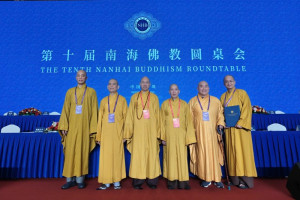
From the ancient Indian city of Mohenjo-daro to Buddhist Gandhara art, South Asia is rich in cultural heritage but under threat from economic sprawl and a lack of restoration capabilities.
To help preserve cultural sites at risk, a group of Japanese archaeologists has set up a nonprofit organization to provide advanced equipment and pass on their know-how.
Pakistan and India, for example, have numerous cultural heritage sites. With the exception of a few famous ones, however, most are little known globally and international aid is limited. Local authorities face financial constraints and in some cases are neglecting or abandoning sites.
Fearing the loss of heritage to the surge in land development in recent years, the Japanese group and other experts launched the Japanese Centre for South Asian Cultural Heritage in October last year.
“Through our network of researchers, we want to provide meticulous support in areas that (local) governments and international organizations can’t get around to,” said Atsushi Noguchi, the NPO’s secretary-general.
The center plans to supply local researchers with such advanced equipment as infrared laser scanners and radio-controlled helicopters for metric documentation and teach them how to use it.
The first project under way involves saving Buddhist artifacts in Pakistan’s Gilgit-Baltistan region that are expected to be submerged by dam construction.
Preservation of the sites, which include about 30,000 items comprising Buddha statues and pagodas, rock carvings and paintings dating from around 4,000 B.C. to the 10th century A.D., is a top priority as some of the murals have already been destroyed by the dam project. Experts believe there are also numerous cultural assets that haven’t even been identified yet.
In cooperation with Pakistan’s Hazara University, the group will use global positioning systems to record the locations of the cultural assets and document and survey the sites. The center in Tokyo will provide other assistance, such as data analysis.
While Pakistan is an Islamic nation, there are many enthusiastic scholars of Buddhist art.
“The Buddhism that was first introduced to Japan came from this region,” said Noguchi. “It is meaningful for us as Japanese to be involved in this.”
Source: http://www.japantimes.co.jp/




